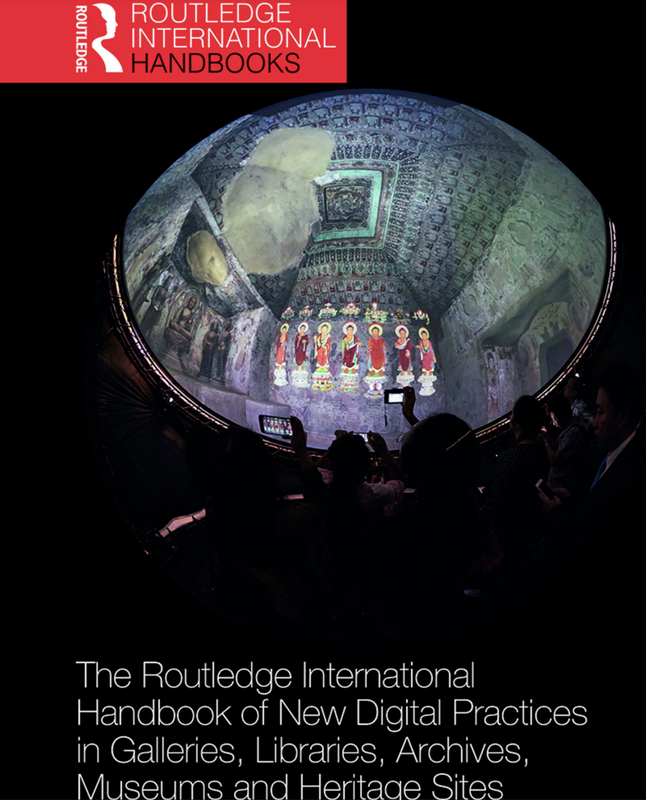Interview with Seb Chan Seb Chan, Hannah Lewi and Wally SmithSeb Chan is currently the Chief Experience Office of the Australian Center for the Moving Image (ACMI) in Melbourne. He has been a leader in digital curation for many years, winning numerous awards for his work and holding several key roles in the GLAM sector, including Director of Digital and Emerging Media at Cooper Hewitt, Director of Digital and Smithsonian Design Museum, New York. Who owns the collection and who has the rights? Putting these huge questions aside for a moment – if we can – we need to think about the fundamental implications of how culture is currently networked, how meaning-making is networked, and not purely about the creation and experience of material culture. do. What intrigued me about moving back to Australia from the Cooper Hewitt Museum of Material Culture was the feeling of working with a ubiquitous collection of film, television and video games. It's not just about unique artefacts anymore. It's about the experience of playing and watching. you have to ask We started working at Cooper Hewitt covering some digital preservation work, planetarium app acquisitions, and other early digital initiatives. But we also realized the importance of design itself. At the beginning of the 21st century, the feeling of a design museum reflected that design was ubiquitous and that the museum's role was not to be a repository for all design, but to be a critical commentator on design. It's the confidence that shows that this smaller offering is achievable, even if something bigger seems out of a fog somewhere. This allows others to join you in a very innovative process. We also believe we are entering an era where phones and computer interfaces increasingly become cameras, videos, searches and ways to interact. I think it is more experimental to reframe the museum as a place that interprets the present through the past and the near future. Do you want to foster more cross-organizational collaboration on these existing networks and databases to compete with Google, or not? SC: I don't think we can do it right now. The reality is that for most institutions public access to digitized content is through Google, as they do not have the in-house technology to put their collections online. The 6,000 or so small museums in Australia have no additional resources and are often run by volunteers. It's certainly appropriate to figure out what the value of material is at the national or state level, and choose a way to shape it, work with collections you already have, or choose a method that focuses on defining what you should have. We still sit around and watch together, but we also watch on multiple screens. Thus, media gaming, TV and movie consumption are less social in terms of viewing but more social in other ways. There are more fan groups and more people commenting on reviews and social media. So while we are somewhat individualized media consumers, we are also sometimes very social in our consumption. And when we create a physical space at ACMI as a film and media museum, how can we create spaces for people to inhabit and reconnect with social viewing or social play, and more importantly, how can we create spaces? Showing and playing with others about my favorite video game of the year is not something I can do when I am at home. So we're asking how we can design a building space that puts social discussions to the fore. Museums still tend not to grapple with such sociality and critical consciousness. They can be incredibly social spaces, but like all other over-engineered spaces that sell pure experiences without real criticism. I am biased towards wanting museums to be important places. I know other people don't have that kind of political leaning. So all they need is fun. There are real benefits to it. Museums can still make people curious about art, curious about design, curious about media, and invest more of their time. Other skills that I find important have to do with designing and creating experiences, and of course there are long historical practices in the world of architecture and theatre. Going back to the question of my musical background, it makes me think about space and how sound behaves in it, how to get people interested in what they think they're not interested in! Because music is about making people listen in different ways they didn't know they would like it. Because they didn't actually sit down with music for a certain amount of time or dance for a certain amount of time. It doesn't matter what it is, but culture means that it takes place in space and has a physical component. Often the intellectual side of it doesn't fully appreciate those things, and digital certainly doesn't. So projects like Pen show that digital can have a physical component. Even if physical things are just your devices, there are physical things designed to make you feel and behave in different ways. So what I'm hoping for is that there are a lot more emerging professionals who have done a variety of practical things. Extending the experience outward is always a good thing.
0 Comments
Leave a Reply. |
Myungja Anna KohArtist Categories
All
Archives
July 2024
|
Proudly powered by Weebly


 RSS Feed
RSS Feed